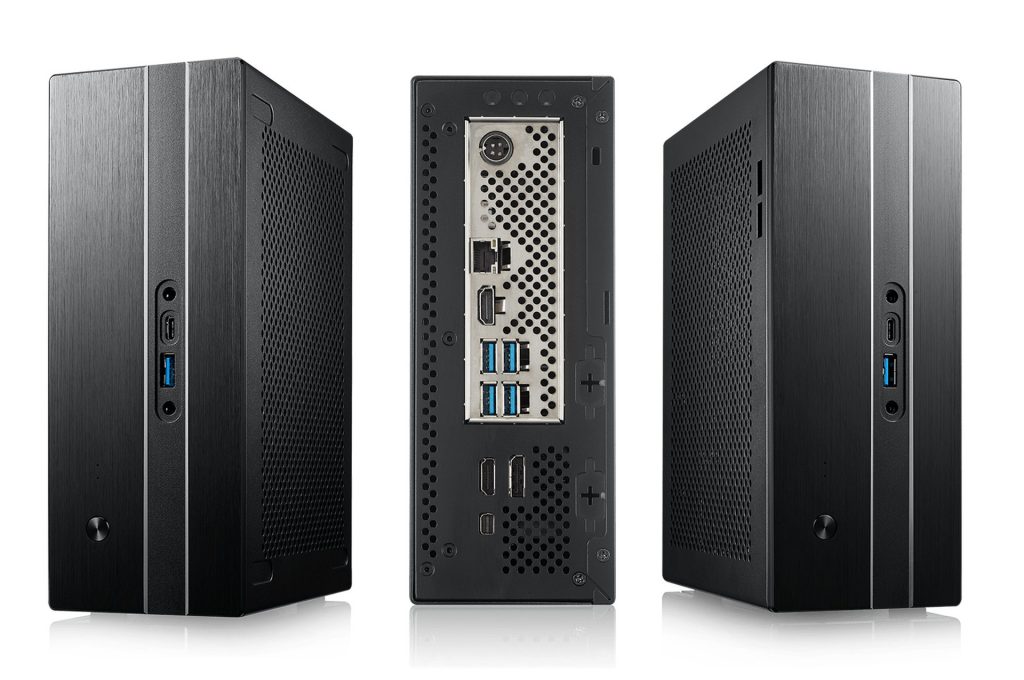Mini-STX with GPU
We talked about ASRock Mini-STX boards recently, and here we have another interesting product. They’ve released a new version of DeskMini barebone with Mini-STX. However, this time it’s a real change. DeskMini GTX or RX is no longer dependant on integrated graphics but has its own GPU.
There are some other additional features that make this computer special. GTX/RX barebones come with Z370 chipset, so six-core Intel Coffee Lake processors are available, such as Core i5-8400 or i7-8700 (TDP 65W). But beware of the fact that the same-named older version of this computer with B250 chipset (Skylake and Kaby Lake) is still on the market.
Few extra centimeters
The second specialty is that DeskMini GTX/RX does not have a standard Mini-STX board as DeskMini 110. Instead, ASRock has developed a special extended PCB format that has a slot for a dedicated graphics card (same position as the position of PCI Express slots on Mini-ITX boards). It is flat and for MXM modules (graphics cards for laptops). They use coolers that are similar to those for CPU.
Due to this layout, the chassis is almost 6 cm longer, but if you consider the gaming performance, it seems like a reasonable compromise. Measures of a classic DeskMini are 15.5 × 15.5 × 8.0 cm (volume is 1.92 l). The extended version with a MXM graphics card: 15.5 × 21.3 × 8.2 cm (volume 2.7 l).
MXM graphics cards up to GeForce GTX 1080
New ASRock barebones can work with quite powerful GPUs (laptop versions): GeForce GTX 1080 (DeskMini GTX 1080), GeForce GTX 1060 3GB (DeskMini GTX 1060), and Radeon RX 580 with 8 GB of memory (DeskMini RX 580). The GPU cooler should probably be included in the package. Its heatsink has radial ribs and a large axial fan in the middle, similar to what is often seen on short graphics cards for the Mini-ITX format.
Thanks to dedicated GPU, DeskMini has wider connectivity options when it comes to video outputs: DisplayPort 1.4, HDMI 2.0, Mini DisplayPort from GPU, and HDMI 1.4 from integrated Intel. Internal connectivity consists of usual two SO-DIMM slots for DDR4, M.2 for Wi-Fi, and there are some extra features too – three M.2 slots with PCI Express 3.0×4 connectivity for SSD + two more SATA ports (there’s a space for two 2.5″ drives), and eight USB connectors (six 3.0 of which one is type C). Not bad for a mini computer. And there’s even a header for RGB LED inside.
It is clear that the consumption of these configurations will be higher due to higher performance. Power supply is still external, but a stronger adapter is needed. The power of the supplied one is 270 W with 19 V, and its size is larger than average. Still, this desktop should be very attractive in terms of size and performance in games.
- Contents
- Mini-STX with GPU
